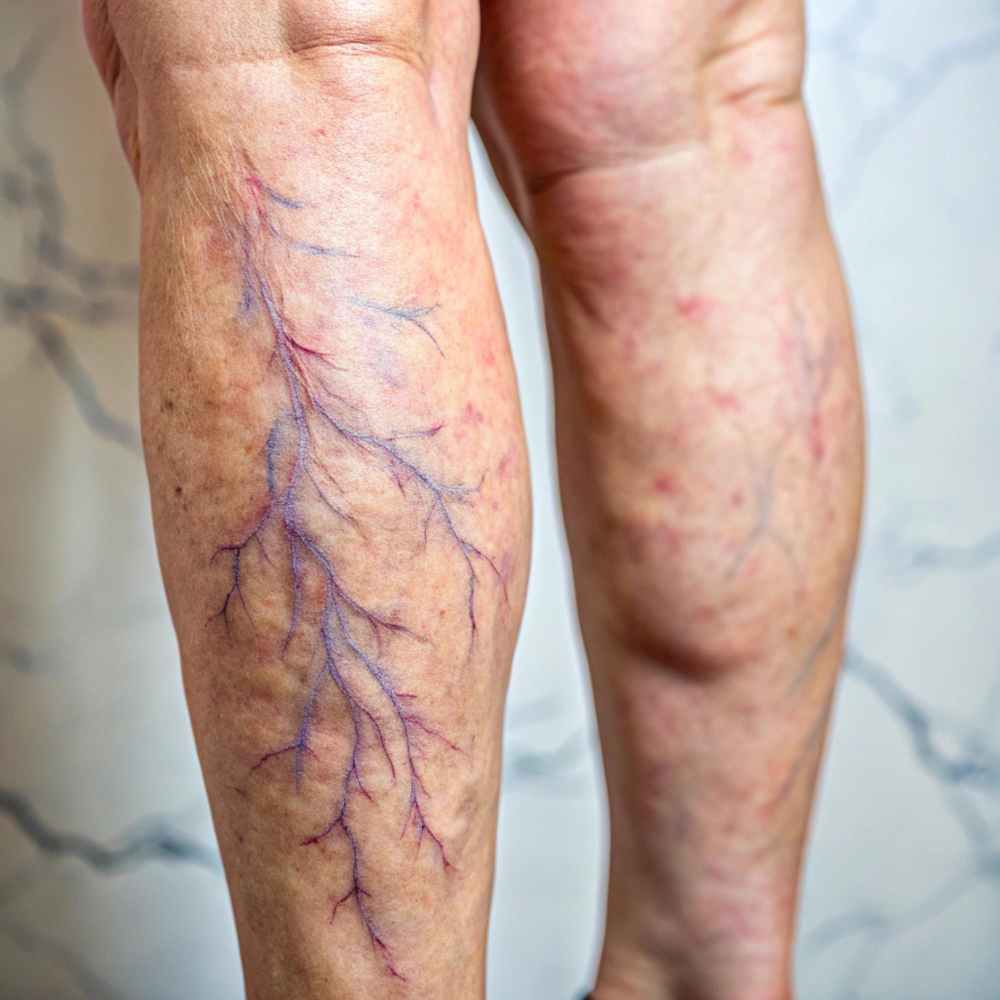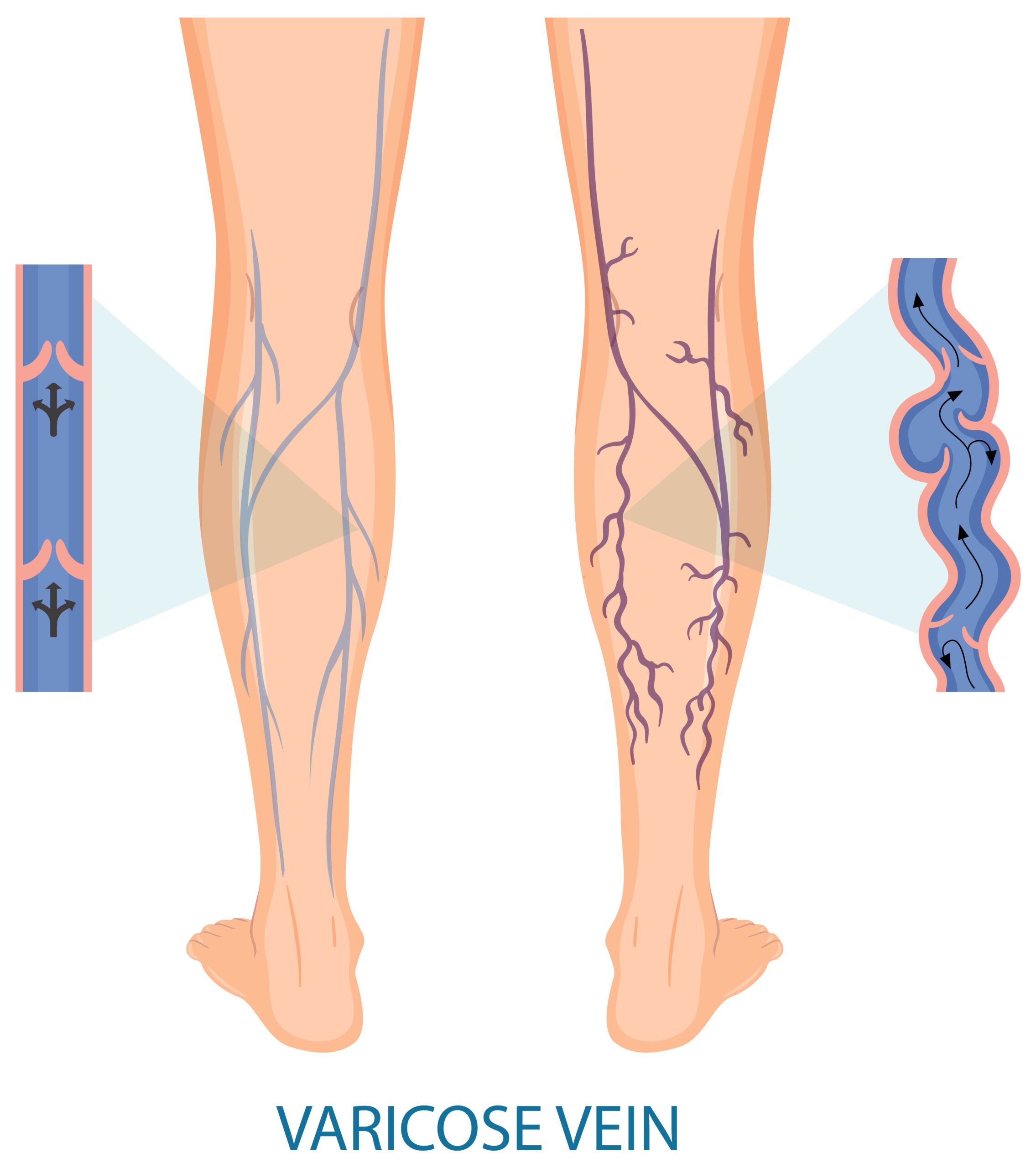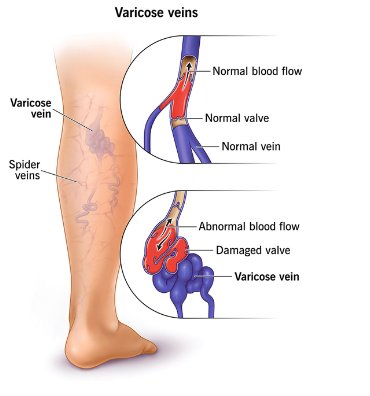Advanced Varicose Veins Solutions
State-of-the-art treatments for complete venous health restoration.
-
VenaSeal™ Glue Therapy
Non-thermal, non-sclerosant adhesive closure
-
Radiofrequency Ablation
Endovenous thermal ablation technology
-
Perforator Ablation
Ultrasound-guided treatment
-
Microsclerotherapy
Precision spider vein treatment

Understanding Varicose Veins
What Are Varicose Veins?
Varicose veins are twisted, bulging veins that typically appear on legs due to malfunctioning valves in the venous system. When valves fail, blood pools in veins causing swelling and visible lumps under the skin.
Symptoms & Indicators
Visible Bulging Veins
Twisted, swollen veins in blue/purple shades, often with spider veins
Leg Fatigue
Heavy, tired legs after standing or physical activity
Skin Changes
Itching, discoloration, and potential ulcers in severe cases
Pain & Swelling
Aching, cramps, and swelling in legs/ankles

Common Locations for Varicose Veins
Varicose veins most commonly appear on the lower half of the body, typically on the calves, ankles, and feet. They can also develop in the pelvic region (pelvic congestion syndrome) and rectum (hemorrhoids).
Common Problems Caused by Varicose Veins
- Heaviness or tiredness in the legs
- Unsightly appearance of bulging veins
- Black/brown spots at the ankle
- Itching in affected areas
- Swelling in lower extremities
- Skin ulcers in severe cases
Causes of Varicose Veins
- Aging and natural wear
- Prolonged standing
- Excess weight
- Genetic predisposition
- Pregnancy changes
- Hormonal fluctuations
- Unknown causes
Serious Complications
Immediate Medical Attention Required For:
- Non-healing ulcers
- Unexpected bleeding
- Sudden swelling/pain
- Chest pain or breathing difficulties
- Chronic Venous Insufficiency (CVI)
- Superficial Thrombophlebitis
- Deep Vein Thrombosis (DVT)
- Pulmonary Embolism
Varicose Veins Treatments

Lifestyle Management
Includes avoiding prolonged standing, active ankle exercises, weight management, and leg elevation to reduce symptoms and prevent progression.
Compression Therapy
Medical-grade stockings that improve blood flow by applying graduated pressure to the legs, reducing discomfort and vein stretching.
Minimally Invasive Injections
Chemical solution injection that causes veins to collapse and fade over time. Effective for smaller veins with minimal downtime.
Advanced Ablation Techniques
Catheter-based procedures using laser, radiofrequency, or medical adhesive to seal affected veins. Includes latest MOCA and GLUE technologies.
Surgical Options
Traditional vein ligation and stripping procedure for severe cases, typically followed by rapid recovery and reduced recurrence.
Benefits of Endovenous Techniques
High Success Rates
Proven effective in reducing symptoms and improving vein health with exceptional treatment outcomes.
No Cuts or Stitches
Minimally invasive procedure with no surgical incisions required for faster healing.
Fast Recovery
Quick return to normal activities with minimal downtime compared to traditional surgery.
Low Complications
Significantly reduced risk profile making it safer for most patients.
Understanding Endovenous Techniques
Glue Therapy (VenaSeal™)
Innovative treatment using medical-grade adhesive to seal affected veins. Performed in-office with:
- No anesthesia required
- Immediate return to activities
- No compression stockings needed
The sealed vein is naturally absorbed by the body within weeks.
Radiofrequency Ablation (RFA)
Gold-standard treatment using thermal energy to close faulty veins:
- 98% success rate
- Ultrasound-guided precision
- Minimal discomfort
Most patients resume normal activities within 24 hours with temporary compression wear.